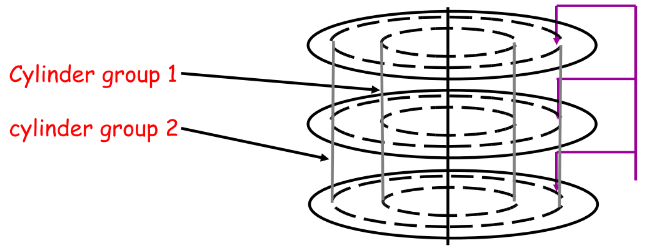Speeding up FS
Original file system design

Components:
- Data blocks
- Contain the file data
- Inode
- Contain meta information about the file
- Hard Links
- Superblock
- Specifies information about the file system
Problems
SLOW
- Blocks too small
- 512 bytes
- Transfer rate slow
- Poor clustering of related objects
- Consecutive blocks not close together
- Inodes far from data blocks
- Inodes for directory not close together
- Poor enumeration performance
- e.g.
ls,grep foo *.c
Internal Fragmentation
- e.g.
Why not just make block size bigger?
- Bigger block size increase bandwidth but also increase internal fragmentation
Solution
Have larger block sizes
- Also allow large blocks to be chopped in to smaller ones
Clustering Related Objects
Group one or more consecutive cylinders into cylinder group

Key Idea
- The system can access any block in a cylinder without performing a seek
- Next fastest place is an adjacent cylinder
- Try to put sequential blocks together
*
- Try to keep inode and file data together

What does our disk layout look like now?
Each cylinder group is basically a mini file system

Bookkeeping information
- Block bitmap
- Bitmap of available fragments
- Summary info within each cylinder group
- if free inodes, blocks, fragments
Finding space for related objects
Old Unix
- Maintained a linked list of free data blocks
- Need another data block → remove one from the head of the list
FFS - Bitmap of free blocks
- Easier to find contiguous blocks
- Small
Using a bitmap
Keep entire bitmap in memory
Calculate bitmap size
bitmap size = disk size / block size / 8
How do we allocate a block close to block x?
Check for blocks near x / array element size
What did we gain?
Performance improvements
- 20-40% of disk bandwidth for large files
- 10-20x faster than original system
We can do better with Extent Based system - Named contiguous blocks with single pointer and length